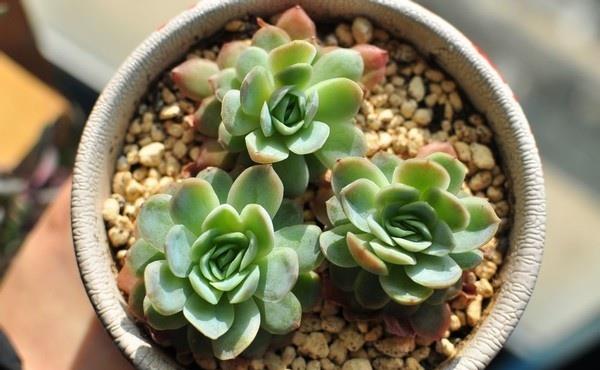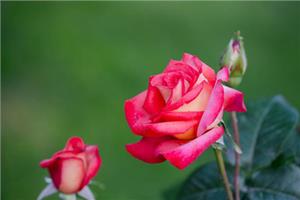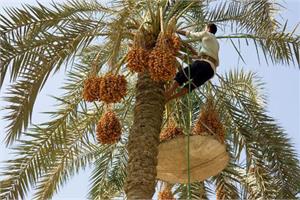What are the most detailed culture methods for succulent plants
What kinds of succulent plants are there? we can learn from the map of succulent plants that there are many kinds of succulent plants. Some of them can be called by name, but some are very strange. Anyway, they are all so lovely. As for the cultivation methods of succulent plants, let's take a look at them.

Culture methods of succulent plants
In recent years, succulent plants have become more and more popular because of their small and delicate, round and lovely shapes, especially on the desks of urban office workers. A small pot of such a lovely succulent plant on the table will always make people feel refreshed and energetic all day. You can take care of it a little when you are free, and you can have a kind of communication and rest after heavy work.
Succulent plants are not all plants growing in the desert as people imagine. there are many kinds of succulent plants, especially in Japan, potted succulent plants have gradually formed a new kind of potted plants adapted to modern people's home life. And some good brands are gradually integrated into their own design and artistic concepts, through flower utensils and careful selection and cultivation to make the display form of succulent plants richer and more beautiful.
How to raise succulent plants? Senior netizens died after not knowing how many pots of succulent plants. She fumbled out some ways, such as: do not all use nutrient soil, it is best to mix with some burnt briquettes; most meat has a growing period and dormant period, according to the specific period to control the watering frequency …... Two years later, a mass of fat meat on the desk proved that smoky water had completed the counterattack from rookie meat growers to people. For the young white people who want to join the succulent planting team, the smoke water just wants to say: "Dear, do not try too hard."
Generally speaking, succulent plants are easy to raise and cannot die without light, but good ventilation and light is the key to raising "meat". At the same time, we should pay attention to water control, preferring less than more. Lack of water or sunshine is just a matter of appearance, but you can't die. Raising succulent plants should be ruthless and unwatered for a thousand ten days and a half months.
The planting of plants is always inseparable from three points, including moisture, medium, light and succulent plants. Light is more likely to affect the state of plant growth, belonging to the advanced class. But water and medium can directly affect the life and death of plants.
There are many novice growers, when they first start to plant something, they always use some soil at will, and enthusiastically take good care of and water the plants every day.
The soil is loose and permeable with good drainage, but it has a certain water retention capacity and is neutral or slightly acidic. There are many media suitable for succulent planting, but it is very important to be sterile. The direct cause of succulent death is often decay, and only one direct cause of plant decay is fungus infection.
Succulent plants in the process of transplanting, if the medium itself carries a variety of bacteria, coupled with improper care in the later stage (such as frequent watering), it is easy to cause fungus infection.
The planting of plants is always inseparable from three points, including moisture, medium, light and succulent plants. Light is more likely to affect the state of plant growth, belonging to the advanced class. But water and medium can directly affect the life and death of plants. There are many novice growers, when they first start to plant something, they always use some soil at will, and enthusiastically take good care of and water the plants every day.
The soil is loose and permeable with good drainage, but it has a certain water retention capacity and is neutral or slightly acidic. There are many media suitable for succulent planting, but it is very important to be sterile. The direct cause of succulent death is often decay, and only one direct cause of plant decay is fungus infection. Succulent plants in the process of transplanting, if the medium itself carries a variety of bacteria, coupled with improper care in the later stage (such as frequent watering), it is easy to cause fungus infection.
Changing pots for succulent plants
Succulent plants generally change pots in spring, and changing pots in spring is an important part of the management of succulent plants in spring. The reason for changing pots in spring is that under the condition of artificial pots, the roots of plants are confined to flowerpots and it is difficult to stretch freely. After a period of growth, the roots are full of flowerpots, which is not conducive to drainage and ventilation.
And the soil in the flowerpot is limited, after the continuous absorption of the root system and watering again and again, the nutrients are lost, and the cultivated soil has changed from the original aggregate to the final shape. In order to keep plants growing freely, pots must be changed in spring.
Soil replacement can not only ensure the supply of new nutrients, but also improve the root growth environment of succulent plants.
Flower friends can rearrange the flower soil with better physical properties and more abundant nutrients for succulent people to enjoy. All kinds of volcanic soil, gravel pull soil, river sand, perlite and cinder are commonly used cultivation media for succulent plants.
In addition, the demand for fertilizer for succulent plants is not too great, but some nitrogen, phosphorus and potassium fertilizers can also be added appropriately in the vigorous growth season to promote their rapid growth and make sufficient nutrient reserves. It is suggested that when redistributing the soil, you can mix a small amount of slow-release granular fertilizer or skimmed bone powder, calcium superphosphate and other base fertilizer, so that you no longer have to apply fertilizer frequently.
In areas where the temperature is below zero, indoor overwintering maintenance, less water, give as much light as possible. In areas with a temperature above 5, control watering, the general problem is not to spend the summer shading, strengthen ventilation, conditional access to the air-conditioning room, some varieties, hot summer, do not enter the air-conditioning room, there is certainly no way to spend the summer.
Related
- Wuhan Hospital Iron Tree Blooming Result Was Instantly Frightened by the Gardener Master
- Which variety of camellia is the most fragrant and best? Which one do you like best?
- What is the small blue coat, the breeding methods and matters needing attention of the succulent plant
- Dormancy time and maintenance management of succulent plants during dormancy
- Minas succulent how to raise, Minas succulent plant pictures
- What are the varieties of winter succulent plants
- How to raise succulent plants in twelve rolls? let's take a look at some experience of breeding twelve rolls.
- Attention should be paid to water control for succulent plants during dormant period (winter and summer)
- Watering experience of twelve rolls of succulent plants
- Techniques for fertilizing succulent plants. An article will let you know how to fertilize succulent plants.



